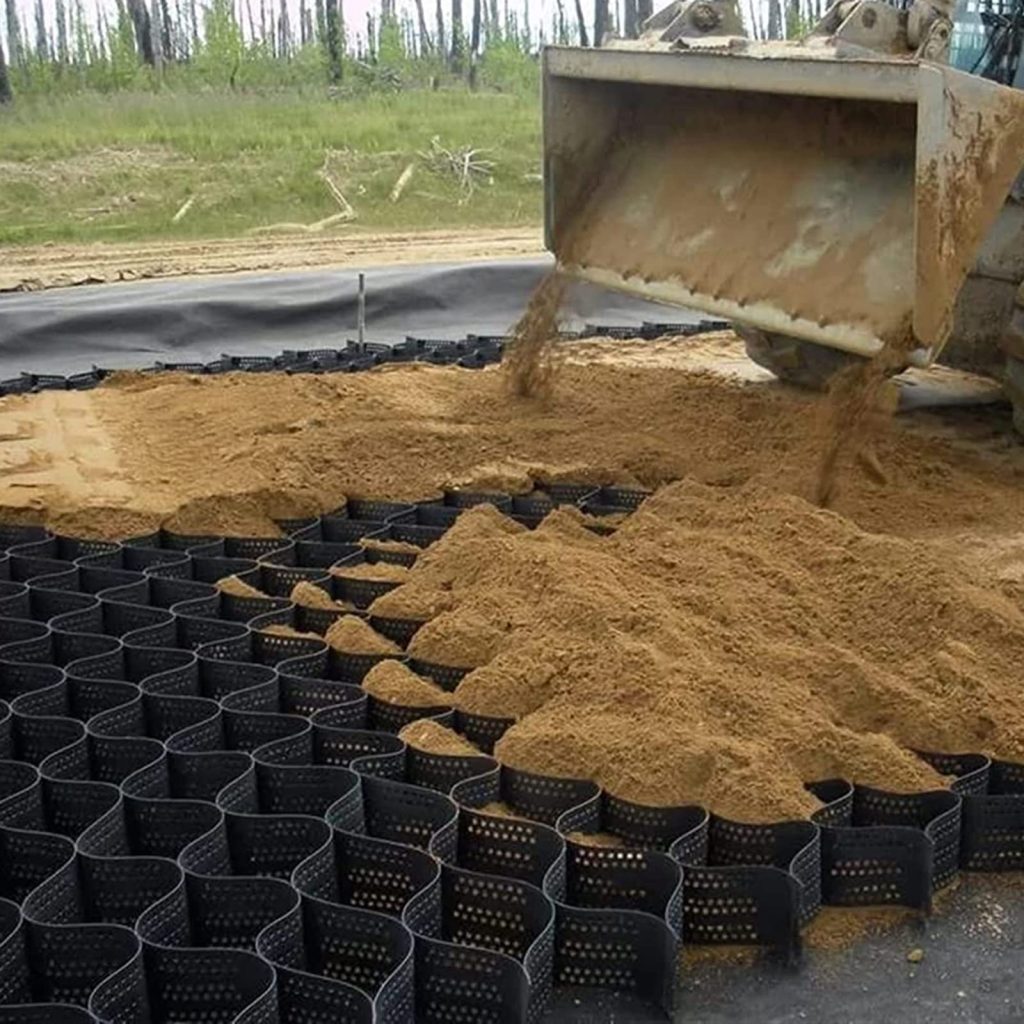What is geogrid soil stabilization?
What are Geogrids? A geogrid is a geosynthetic material used to stabilize soil. Today, more contractors are choosing geogrids to improve the performance of the aggregate within pavement structures, combat increasing material costs, and save significant time on projects.
What is the main function of a geogrid in soil?
A geogrid is a geosynthetic material used to stabilize soil. Geogrids have openings, called apertures, which allow aggregate to strike through and provide confinement and interlock.
Geogrids are deployed for three primary applications:
- Building firm working surfaces over soft ground conditions
- Enhance a pavement’s service life
- Reduce the structural cross-section of both paved and unpaved roadways for given service life.
- Geogrids have also been proven to significantly improve a pavement’s susceptibility to environmental cracking common when building over highly expansive subgrade soils. Geogrids have been effective in practice for reducing rutting damage, distributing traffic loads within the pavement foundation layers, increasing the resilient modulus of the base course, and stabilizing the subgrade layer.

Advantages
Soil stabilization geogrid is a material used in civil engineering for improving the stability and load-bearing capacity of soil. Geogrids are made of high-strength synthetic polymers and have a grid-like structure that provides tensile strength and enhances soil stability.
The use of soil stabilization geogrids involves placing the geogrid between soil layers and then compacting the soil over it. The geogrid helps distribute the load more evenly, reducing the amount of settlement and increasing the stability of the soil. The improved load-bearing capacity of the soil can allow for the construction of roads, embankments, retaining walls, and other structures in areas where the natural soil may not be strong enough to support such structures.
Soil stabilization geogrids are often used in combination with other soil stabilization techniques, such as geotextiles, geocells, or soil nails, depending on the specific soil conditions and construction requirements. Overall, the use of geogrids can provide a cost-effective and sustainable solution for soil stabilization and infrastructure development.
